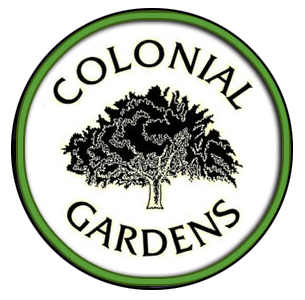
This blog is part of our inspiration series as we prepare for spring. For plant recommendations for your specific conditions, we recommend coming in with some information about your space, sunlight, and watering so that we help you choose the plants that are best for you. Keep checking back to our blog for more gardening inspiration ideas.
Picture It: You’re walking along the beach, the sand squishing between your toes. The ocean breeze rustles your hair and tosses the tufts of grass that secure the dunes. The edge of the sea melds with the blue of the sky. For some, this is what paradise looks like. It’s no wonder why we’d like to bring the feel of the coast to the Philly suburbs!
This particular coastal style is inspired by the beaches of the Northeast. We’re thinking of the sophistication of Kennedy style rather than the hot, tropical vibe of Florida (you’ll get that in a different blog). For this garden, we’re going to mix true coastal plants that can thrive in our climate as well as some that give the feeling of visiting the ocean. Most of these plants do best in full-sun conditions with well-draining soils. It’s actually much easier to grow here than it is on the coast, where winds batter the vegetation and salt water infiltrates the soil, so you have a lot of options!
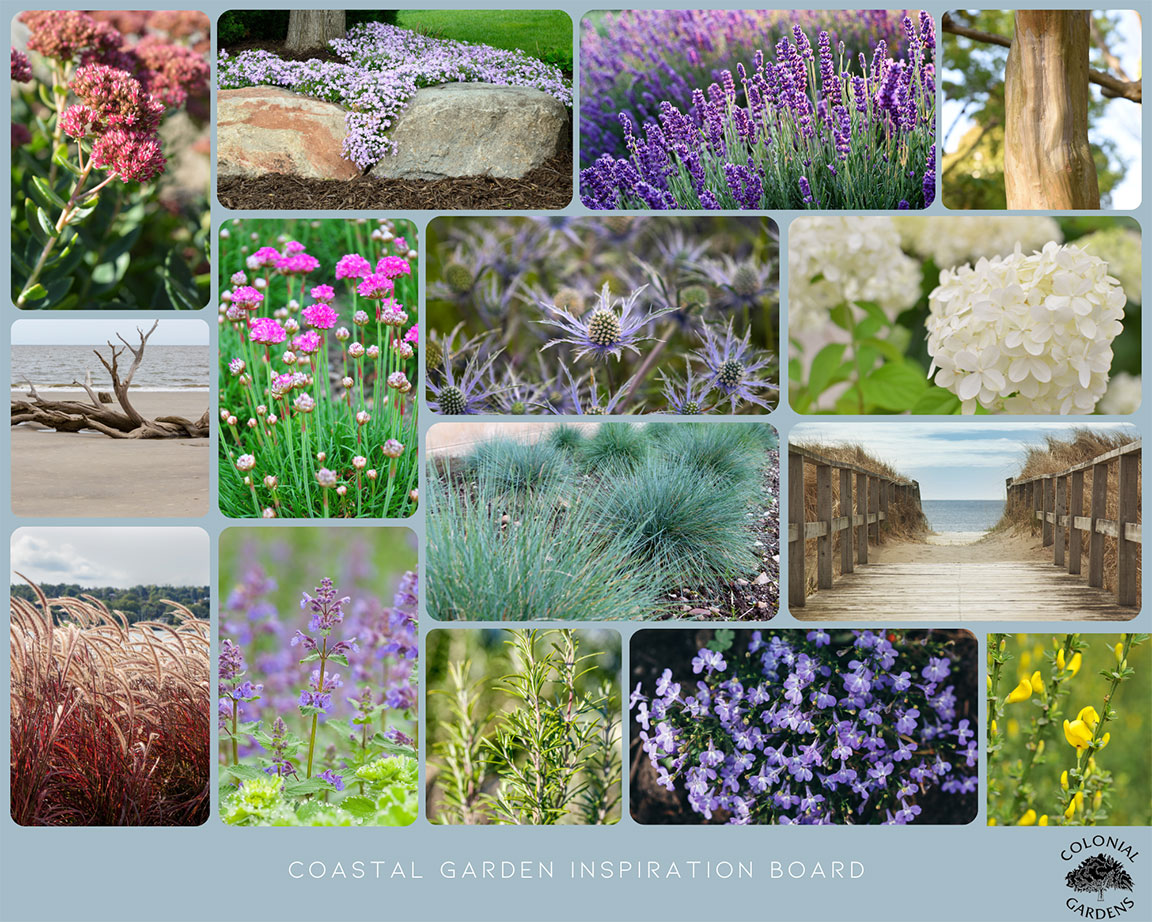
Essential Elements:
Color: For foliage, we’re looking at blues and cool greens to evoke the calm color palette of the ocean. Flower blooms can pop with colors of purples, pinks, or whites. Grounding these more showy blooms in the blues and greens will help create a cohesive color look.
Movement: There’s nothing quite like the ocean breeze, and that’s the feeling we want to capture in the coastal garden. With that spirit, grasses and plants with upright stems and delicate flowers are going to help capture the constant ebb and flow of the ocean. The sway of these plants in the breeze will give you the motion of the waves and the wind on the dunes.
Hardscaping: Because we’re not at the beach, the accessories for this style can really sell the inspiration. The wooden slats and knotted rope railings of the boardwalk might appear as a small pathway through the garden. Rocks, large and small, can help evoke the colors of the sand and dunes or rocky shorelines. Driftwood can line paths or act as its own accent piece. Subtle elements like a scalloped picket fence that reminds you of the waves can support the theme. You can also add more obvious items like sea-themed statuary. Paint your mailbox like a lighthouse! The options are endless!
Plants:
Before you select any plants, look at the light conditions, soil conditions, and space in your garden to make sure you select plants that will thrive in your space.
Grasses: Grasses are an essential plant to the coastal garden. Not only do they capture the main vegetation along the dunes, but they also add a movement element by tossing in the wind. In more open areas or corners, add taller grasses like the native switchgrass. Along the pathways or in their own groupings, you can add options like blue-fescue. Blue-fescue is the perfect color for the coastal garden and stays compact, more like a groundcover. For shady areas or for a native option, try Pennsylvania sedge. If you are planting in a shady area, or if you want a native option, try Pennsylvania sedge. It won’t have the same color as blue-fescue, but it’s well adapted to our area and is drought-tolerant.
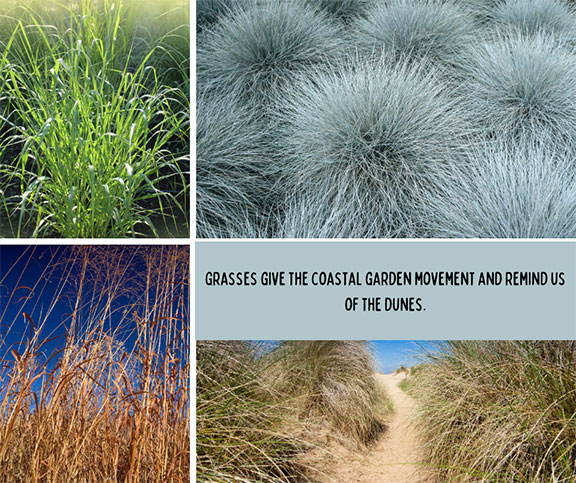
Crape Myrtles: This is the only tree on the list, but don’t let that deter you from adding trees to your coastal garden. You’ll appreciate the shade they provide in the heat of summer while lounging in your pool chair and reading your favorite beach book. For a thematic tree, I selected the crape myrtle, which comes in a variety of sizes and colors. Crape myrtles bloom in the middle of summer, adding a pop of color. To me, what makes the crape myrtle perfect for a coastal garden is its bark. The smooth, light-brown trunk reminds me of driftwood. Crape myrtles are sensitive to cold snaps. Planting this tree close to the house can help protect it from winter winds and keep it beautiful year after year.

Armeria: Also known as sea pinks, this is a true coastal flower. With a grass like base, this sun-loving perennial produces little pink globes of flowers in the spring. They are drought tolerant and thrive in well-draining soils without too much compost. Place them near boulder elements for a pop of color. Want a similar plant that blooms over the summer? Try varieties of dianthus that sport grassy blue-green foliage and pink blooms.
Eryngium: Also known as sea holly, this unique, spiky flower is one of those rare blue bloomers. Like other plants native to the coast, it does well when planted in soil with good drainage and full sun. It can also be drought-tolerant. This sun-loving perennial is an underrated pollinator powerhouse. When sea holly blooms in our nursery, it’s a bee magnet.
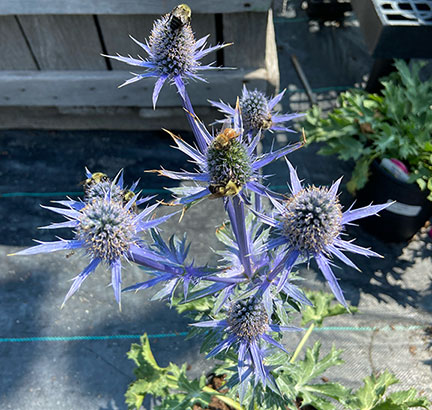
Creeping Phlox: An early spring bloomer, creeping phlox becomes a blanket of low-lying blooms. This groundcover comes in light pinks, hot pinks, and blues. I think any color would look appropriate in the coastal garden, but I like the lightest pink possible, which looks a bit like sea foam. I like the idea of creeping phlox along a stone border, like water spilling over rocks as the waves break on the shore, but you can use it anywhere in your beds where you want to cover the mulch. For a more evergreen groundcover with a similar look, try moss phlox.
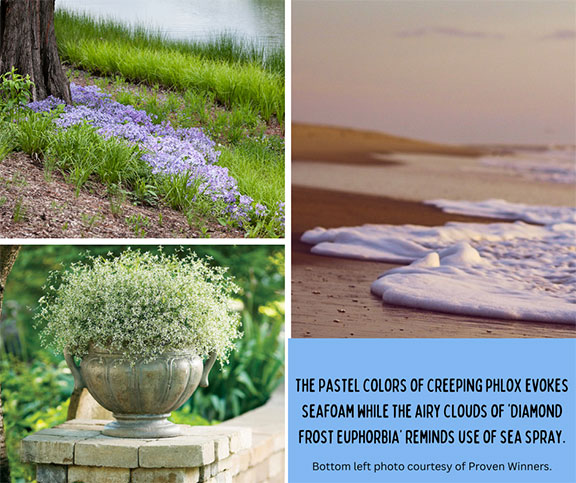
Lavender and Rosemary: Lavender and rosemary are a great way to add scent and texture to your coastal garden. Lavender thrives in the well-draining, sandy soils of the coast. The small purple blooms add to the cool palette, are attractive to bees, and will sway in the wind like the grasses. If you have problems growing lavender, try catmint or Russian sage as an alternative. Rosemary is another option for adding some fragrance to the coastal garden with a little more structure to its form than lavender.
Creeping Juniper: While evergreens might not come to mind immediately when you think of the coast, creeping juniper gives year round color without disrupting your theme. Instead of growing upright and conical, creeping juniper is a groundcover, adding a layer of blue-green to the base of the garden. Creeping juniper can help control erosion on slopes where other plants may struggle. While it may sway in the wind, the rolling foliage of the creeping juniper evokes the rolling of the waves. Depending on the variety, this plant maxes out at about one to two feet tall, but can spread eight to twenty feet wide. Expect some dieback, which may work in your favor as it reveals the curving form of its branches.
Hydrangea: There is a classic feeling to hydrangeas that are hard to beat. I don’t know if the huge, pillowy blooms remind me of the clouds above the ocean or if the pure white gives me Coastal Grandma fashion vibes (think old money simplicity, if you’re unfamiliar), but I feel like these plants would do well in your coastal garden as a backdrop. Many of the other plants listed are low-growing, but hydrangea will add some mass to the garden along the house. If you’d like a native alternative to classic hydrangeas, check out Viburnum and Clethra varieties.
Other Plants:
- Euphorbia ‘Diamond Frost’
- Vinca Vine
- Great Blue Lobelia
- Geranium (white)
- Other Junipers
- Allium
- Yarrow
- Ornamental Kale
- Daylilies
“But the sea which no one tends is also a garden.” –William Carlos Williams
Whether you picture yourself as a mermaid, a weathered sea captain, or a fancy-pants vacationing in the Hamptons, this might be the vibe for you! Happy sailing gardening!
